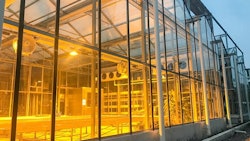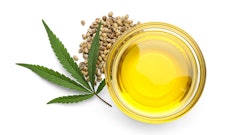
With an underdeveloped and disjointed supply chain hindering the hemp fiber industry, farmers in Indiana have decided to take matters into their own hands.
A group of hemp growers in the southeastern part of the state have officially launched Heartland Hemp Cooperative, an incorporated farmer-owned co-op that will both produce and process its own hemp for fiber.
Farmers in that part of the state were among those burned by the abrupt closure of Sunstrand, a hemp fiber processor, in early 2020. But rather than give up, they’ve decided to work to remove the middleman by purchasing their own fiber processing equipment.
Doing so will not only reduce the risk of fallout from broken contracts, but also help farmers reduce costs and keep more of the money they earned throughout the season.
“I’m really happy we’re at this point now,” says Michael Morrow, the vice president of the co-op. “We can really start focusing on being able to give people what we’re going to do for them as part of a co-op versus [telling them] what we could possibly do as a co-op.”
How It Works
For a one-time membership fee of $500, joining the co-op brings several advantages to participating farmers. In addition to sharing knowledge and resources with others in the co-op, a primary advantage for members is having their inputs, like seeds, provided with no up-front costs. Marty Mahan, the president of the co-op, says the aim is for the co-op to ultimately save money on these inputs, as it will be purchasing the supplies in bulk.
With little information available about which fiber cultivars grow best in each region of the U.S., Mahan says he and other growers are still researching to find the optimal genetics for the state. Once they find that out, Mahan and Morrow say all the members of the co-op will be growing primarily the same hemp variety (aside from those they’re experimenting with) to maintain a consistent processed product, which is attractive to potential buyers.
“Consistency is the biggest problem buyers have. Their specifications are very tight,” Mahan says. “The only way you can provide a consistent product is to start with a consistent product.”
Participating farmers also get a say in how the co-op is run, as they will be able to choose board members through a democratic voting process. Members will have a say in other co-op matters as well, including regular revisitations of the group’s bylaws.
But the primary benefit for members is knowing they’ll have a place to take the hemp for processing and marketing.
Heartland Hemp is in its fundraising stages with the goal to purchase a decorticator to be functional by next season’s harvest. The co-op will cover the cost of the decorticating facility, including the facilities, equipment and labor.
While the decorticating facility will likely be in southeastern Indiana, Mahan hopes it can serve as a hub for farmers near the border in Ohio and Kentucky as well.
At the end of the season, members of the co-op will take their hemp to the decorticator and receive market price for it. It’s a guaranteed return on the work they put in, but it also provides a chance to make more profit once that processed product is eventually sold.
“[Payment] won’t be amazing at the harvest and turn-in time, but that next step is when those dividends come back from the products we put into the marketplace … That's where co-op will recover the expenses of the investment and move into 100% member-owned and be able to really give dividends back to members,” Morrow says.
Long-Term Goals
The co-op’s board of directors will be responsible for finding and negotiating with potential buyers of the processed hemp. Mahan says those talks have already begun.
“The low-hanging fruit, and the easiest thing we can sell on our own, is the hurd itself. A lot of things, like animal bedding and hempcrete, you can make with raw hurd. We are also looking into other types of products we can take directly to the buyer that might [have] a little bit higher margin,” Mahan says. “Then, we have a couple different folks we’re talking to about possibly purchasing the fiber itself. So, we would basically just be providing raw, clean product, and they could use it for whatever their next process is.”
Money made from sales of the processed fiber will go back to the co-op until it becomes profitable. Then, those profits will be turned back around as dividends to investors and members based on how much hemp they grew—for example, a member who produces 50 tons of fiber will make twice as much as a member who produces 25 tons of fiber.
Morrow doesn’t anticipate being able to provide dividends for at least a few years. But he hopes the added incentive, along with the collaborative nature of the co-op, will be a driver in moving the hemp fiber industry forward.
“I really think the Midwest is one of the premier areas of agriculture in the world,” Morrow says. “Being able to move this industry forward here would give it more benefit than in a lot of other places.”























